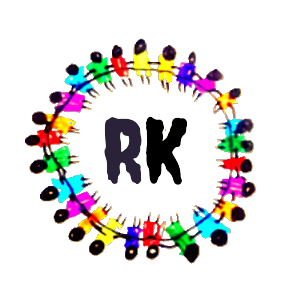C Language – Basic Programs
- Ex 1 : My First Basic Program -I
- Ex 2 : My First Basic Program -II
- Ex 3 : My First Basic Program -III
- Ex 4 : Integer & Float Converstion
- Ex 5 : Floating Point Error..
- Ex 6 : Variable Declaration
- Ex 7 : Working With Variable
- Ex 8 : Integer Variable With Scanf-I
- Ex 9 : Integer Variable With Scanf-II
- Ex 10 :Integer Variable With Scanf-III
- Ex 11 :Integer Variable With Scanf-IV
- Ex 12 :Character Variable Declaration
- Ex 13 :String Variable With Scanf Function
- Ex 14 :String Variable With gets Function
- Ex 15 :Combine all Variables
- Ex 16 :Print Employee Information with gotoxy function
Example : 1 Write a Program to print “Hello”
#include<stdio.h>
#include<conio.h>
void main()
{
/*My First Program – Comment Line */
clrscr();
printf(“Hello”);
getch();
}
Output :
Hello
Example : 2
#include<stdio.h>
#include<conio.h>
void main()
{
clrscr();
printf(“Hello\nWelcome”);
printf(“\nGoldenjrsinfo”);
printf(“-My Web”);
getch();
}
Output :
Hello
Welcome
Goldenjrsinfo-MyWeb
Example : 3
#include<stdio.h>
#include<conio.h>
void main()
{
clrscr();
printf(“\nHello 12”);
printf(“\n%d”);
printf(“\n%d”,100);
printf(“\nA=%d”,100);
printf(“\nA=%d+10”,100);
printf(“\nA=%d”,100+10);
getch();
}
Output :
Hello 12
0
100
A=100
A=100+10
A=110
Example : 4 Integer & Float Conversions (5/2)
#include<stdio.h>
#include<conio.h>
void main()
{
clrscr();
printf(“\n1-> %d”,5/2);
printf(“\n2-> 5/2 = %d”,5/2);
/* printf(“\n5/2 = %f”,5/2); This Line is Error */
printf(“\n3-> 5.0/2 = %d”,5.0/2);
printf(“\n4-> 5/0/2 = %f”,5.0/2);
printf(“\n5-> 5.0/2 = %.2f”,5.0/2);
printf(“\n6-> 5/2.0 = %.2f”,5/2.0);
printf(“\n7-> 5.0/2.0=%.2f”,5.0/2.0);
getch();
}
Output :
1-> 2
2-> 5/2 = 2
3-> 5.0/2 = 0
4-> 5/0/2 = 2.500000
5-> 5.0/2 = 2.50
6-> 5/2.0 = 2.50
7-> 5.0/2.0=2.50
Example : 5 Floating Point Error….
#include<stdio.h>
#include<conio.h>
void main()
{
clrscr();
printf(“\n5/2 = %f”,5/2);
/*if Error found this program replace %f into %d”*/
getch();
}
Output :(Press ALT+F9 to compile In Turboc & Press ALT+F5 to see below Message)
printf : floating point formats not linked
Abnormal program termination
Example : 6 Variables…..
#include<stdio.h>
#include<conio.h>
void main()
{
int a;
clrscr();
printf(“\n%d”,10);
printf(“\n%d (Garbage Value)”,a);
getch();
}
Output :
10
-28711 (Garbage Value)
Example : 7 Variables…..
#include<stdio.h>
#include<conio.h>
void main()
{
int a;
clrscr();
a=10;
printf(“\n%d “,a);
printf(“\nValue = %d”,a);
printf(“\nGiven Value = %d”,a);
getch();
}
Output :
10
Value = 10
Given Value=10
Example : 8 Integer Variable with scanf
#include<stdio.h>
#include<conio.h>
void main()
{
int a;
clrscr();
/* a=10;*/
scanf(“%d”,a);
printf(“\n%d “,a);
printf(“\nValue = %d”,a);
getch();
}
Output :if You Type 20 from Keyboard
20
Press Enter…
20
Value = 20
Finally…You can see Output window..
20
20
Value = 20
Example : 9 Integer Variable with scanf
#include<stdio.h>
#include<conio.h>
void main()
{
int a;
clrscr();
printf(“\nEnter Any Value = “);
scanf(“%d”,a);
printf(“\nEntered Value = %d”,a);
getch();
}
Output :
Enter Any Value =
if You Type 20 from Keyboard
Enter Any Value = 20
Press Enter…
Entered Value = 20
Finally…You can see Output window..
Enter Any Value =20
Entered Value = 20
Example : 10 Working With scanf Function
#include<stdio.h>
#include<conio.h>
void main()
{
int a,b;
clrscr();
scanf(“%d %d”,&a,&b);
printf(“\n%d”,a);
printf(“\n%d”,b);
getch();
}
Output : 1
if You type 10 from Keyboard
10
Press Enter > again please type 20 from Keyboard
10
20
Finally…You can see Output window..
10
20
10
20
Output : 2
press 10 from Keyboard > press spacebar (Don’t Press Enter) > Press 20 from Spacebar
10 20
Press Enter >
10 20
Finally…You can see Output window..
10 20
10
20
Example : 11 Working With Scanf ..
#include<stdio.h>
#include<conio.h>
void main()
{
int a,b;
clrscr();
printf(“\nEnter a Value = “);
scanf(“%d”,&a);
printf(“\nEnter b Value = “);
scanf(“%d”,&b);
printf(“\nA Value = %d”,a);
printf(“\nB Value = %d”,b);
printf(“\nA+B Value = %d”,a+b);
printf(“\nA+10 Value = %d”,a+10);
getch();
}
Output :
Enter a Value =
if You Type 20 from Keyboard
Enter a Value = 10
Press Enter…
Enter a Value = 10
Enter b Value = 10
Press Enter…
Finally…You can see Output window..
Enter a Value = 10
Enter b Value = 20
A Value =10
B Value= 20
A+B Value = 30
A+10 Value = 20
Example : 12 Character Variable Declaration
#include<stdio.h>
#include<conio.h>
void main()
{
char ans;
clrscr();
printf(“\n ans = %c”,ans);
ans=’ ‘;
printf(“\n ans= %c”,ans);
printf(“\n ans= %d”,ans); /*Returns ascii value of Space */
ans=’Y’;
printf(“\n ans = %c”,ans);
getch();
}
Output :
ans = Å
ans=
ans= 32
ans = Y
Example : 13 String Variable With Scanf Function
#include<stdio.h>
#include<conio.h>
void main()
{
char ans;
char myname[15];
clrscr();
printf(“\nEnter Any Character => “);
scanf(“%c”,&ans);
printf(“\nEnter Any Name(String) => “);
scanf(“%s”,&myname);
printf(“\nGiven Character => %c”,ans);
printf(“\nGiven Name => %s”,myname);
getch();
}
Output :
Enter Any Character => M
Enter Any Name(String) => Manoj Kumar
Given Character => M
Given Name => Manoj
Example : 14 String Variable With gets Function
#include<stdio.h>
#include<conio.h>
void main()
{
char ans;
char myname[15];
clrscr();
printf(“\nEnter Any Name => “);
scanf(“%s”,&myname);
printf(“\nGiven Name Using Scanf => %s”,myname);
/*
Please add fflush(stdin) before gets function
If Omitted this line,You will get wrong output
If any doubt,remove the fflush(stdid); and run again
*/
printf(“\nEnter Any Name => “);
fflush(stdin);
gets(myname);
printf(“\nGiven Name Using gets => %s”,myname);
getch();
}
Output :
Enter Any Name => Vijay Antony
Given Name Using Scanf => Vijay
Enter Any Name => Vijaya Raj
Given Name Using gets => Vijaya Raj
Example : 15 Combine all variables (Emp Info)
#include<stdio.h>
#include<conio.h>
void main()
{
int empno;
char empname[20];
float salary;
clrscr();
printf(“\nGive the Employee Details”);
printf(“\nEmployee ID = “);
scanf(“%d”,&empno);
printf(“\nEmployee Name =”);
fflush(stdin);
gets(empname);
printf(“\nSalary = “);
scanf(“%f”,&salary);
printf(“\nGiven Emp Details “);
printf(“\nEmp ID=%d , Empname= %s,Salary = %.2f”,empno,empname,salary);
getch();
}
Output :
Give the Employee Details
Employee ID = 101
Employee Name =Rakesh Sharma
Salary = 24000
Given Emp Details
Emp ID=101 , Empname= Rakesh Sharma,Salary = 24000.00
Example : 16 print employee information with gotoxy function (Read Carefully)
/*Author : C.Saravana Kumar */
#include<stdio.h>
#include<conio.h>
void main()
{
int empno;
char empname[20];
float salary;
clrscr();
/*Syntax of gotoxy function is > gotoxy(Xposition,Yposition) */
/*
————————————– (x) |
| .(10,1)
|
|
| .(10,40) .(60,40)
(y)
(10,1) Means > gotoxy(10,1);
*/
gotoxy(2,2);printf(“Employee ID “);
gotoxy(25,2);scanf(“%d”,&empno);
gotoxy(2,4);printf(“Employee Name “);
gotoxy(25,4);fflush(stdin);gets(empname);
gotoxy(2,6);printf(“Salary “);
gotoxy(25,6);scanf(“%f”,&salary);
gotoxy(2,8);printf(“\nGiven Emp Details “);
gotoxy(2,11);printf(“Emp No”);
gotoxy(9,11);printf(“Emp Name”);
gotoxy(32,11);printf(“Salary”);
gotoxy(2,13);printf(“%d”,empno);
gotoxy(9,13);printf(“%s”,empname);
gotoxy(32,13);printf(“%.2f”,salary);
getch();
}
Output :
Employee ID 101
Employee Name Tamil Selvan
Salary 45000
Given Emp Details
Emp No Emp Name Salary
101 Tamil Selvan 45000.00







